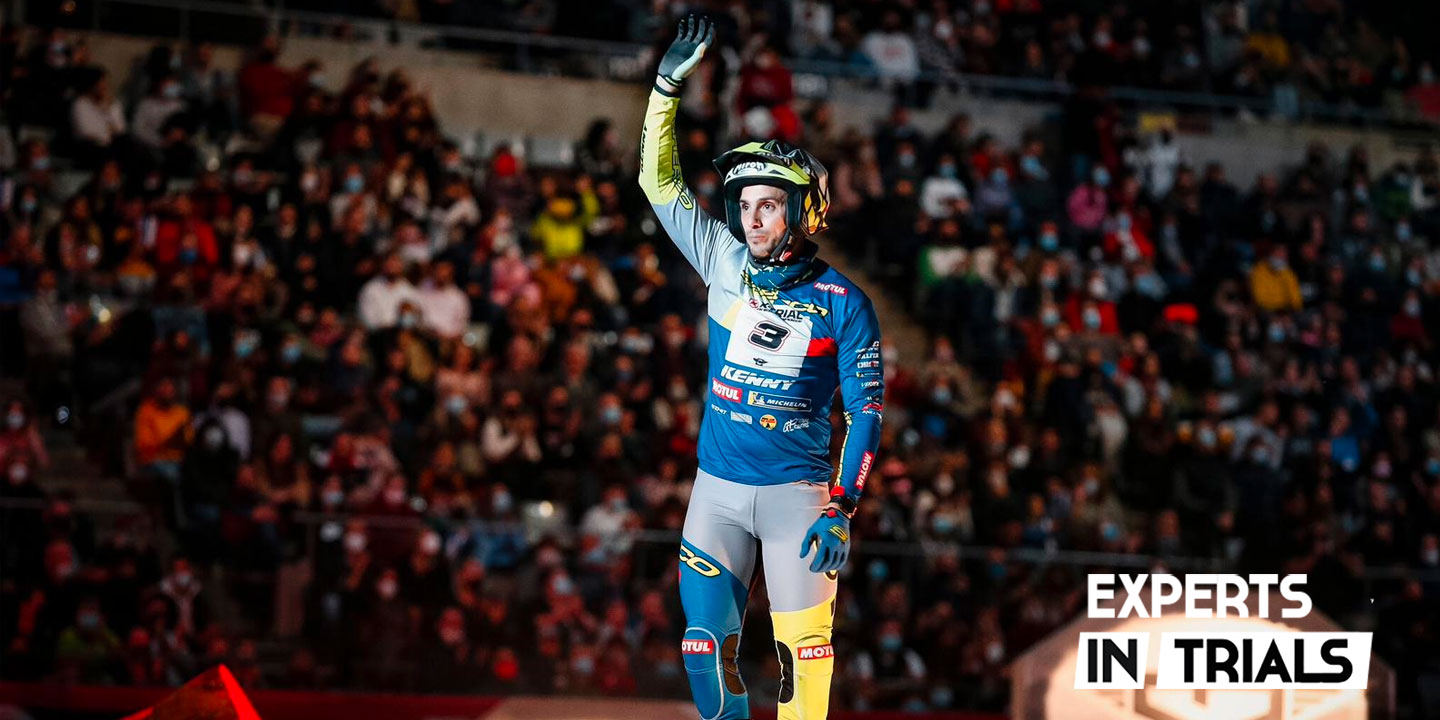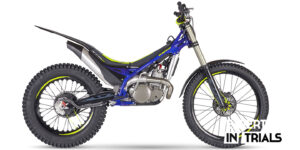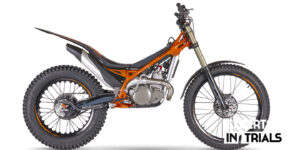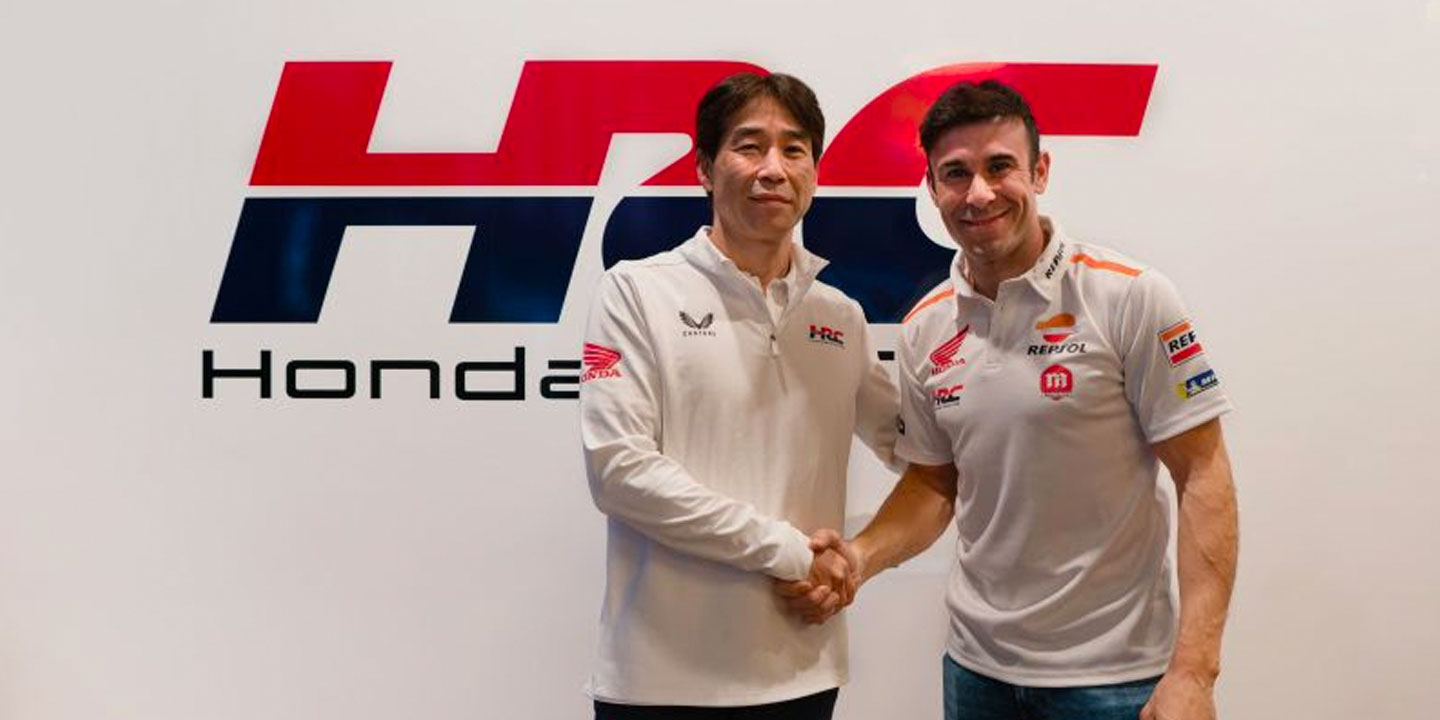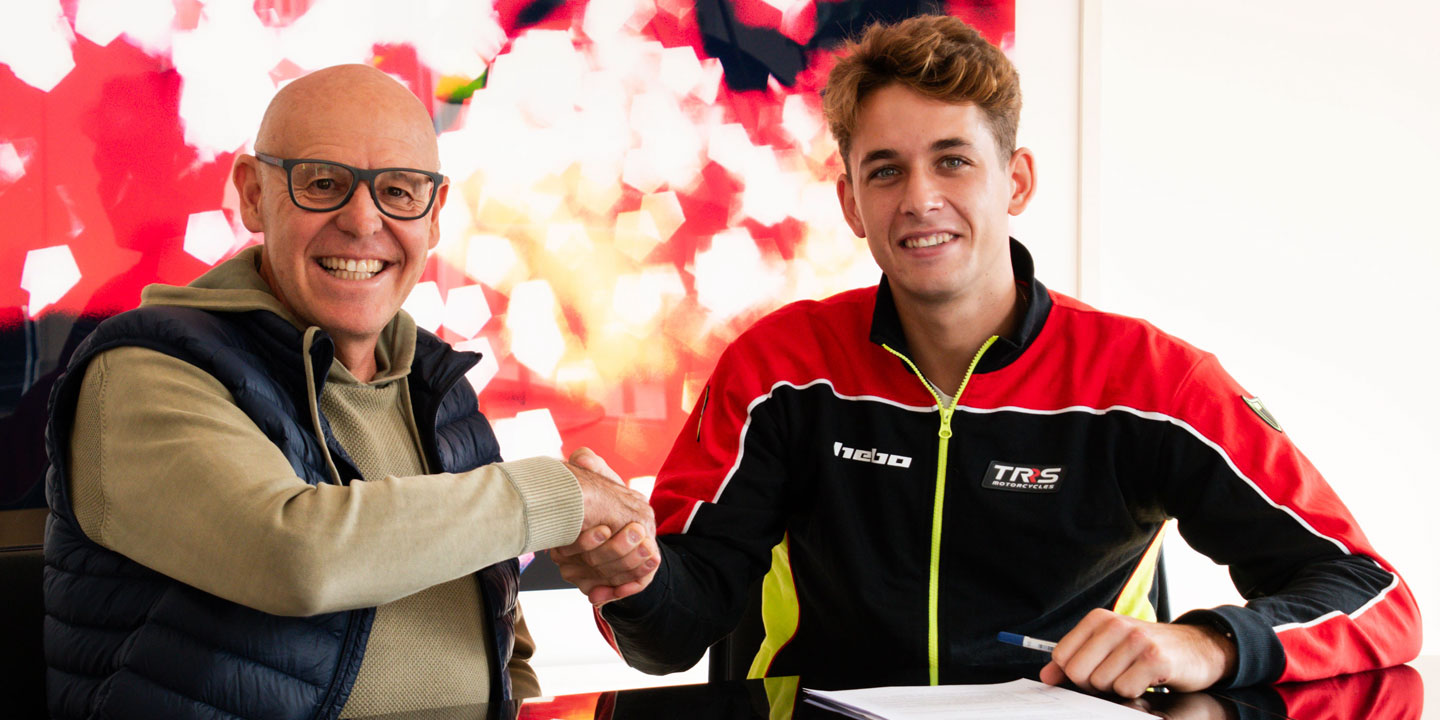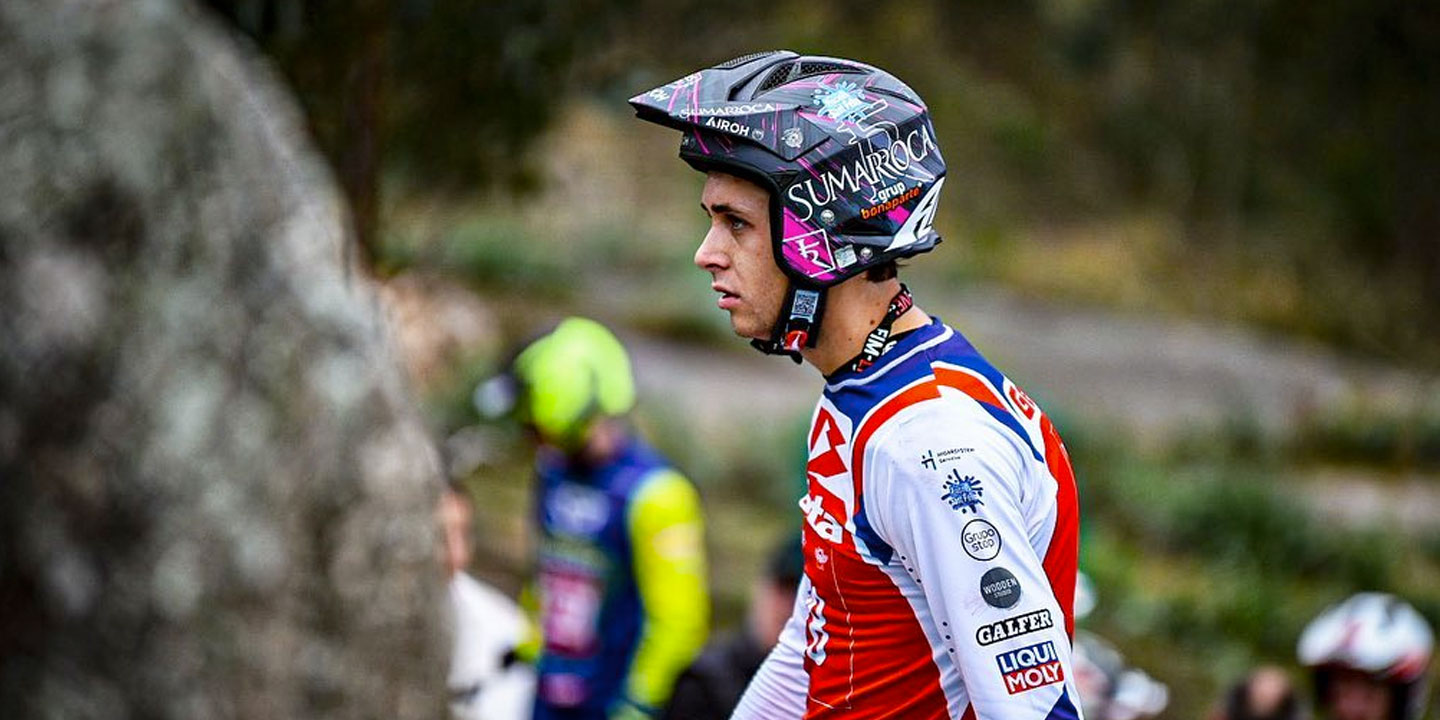We interviewed Jeroni Fajardo, current number one rider of the Sherco Factory team and one of the veterans in the top category. His experience and capacity for analysis opens up a range of very interesting debates about the course of the Trial World Championship, the evolution of current trial bikes and the expectations of this great sport.
Jeroni Fajardo made his debut in the Trial World Championship in 2001 and has been an official rider for the main trial brands, such as Beta, GASGAS, Ossa, Vertigo and Sherco. He is currently immersed in the development of the brand new Sherco STR 300 with electronic injection, as well as finding again the dynamic sensations that allow him to be in the “top 3”, positions for which he was fighting regularly until just three years ago.
We analysed with Jeroni Fajardo the novelties imposed by the FIM at the level of regulations, the relationship with his rivals and of course the first-person approach to the aspects that would help improve the audience and attractiveness of the trial.
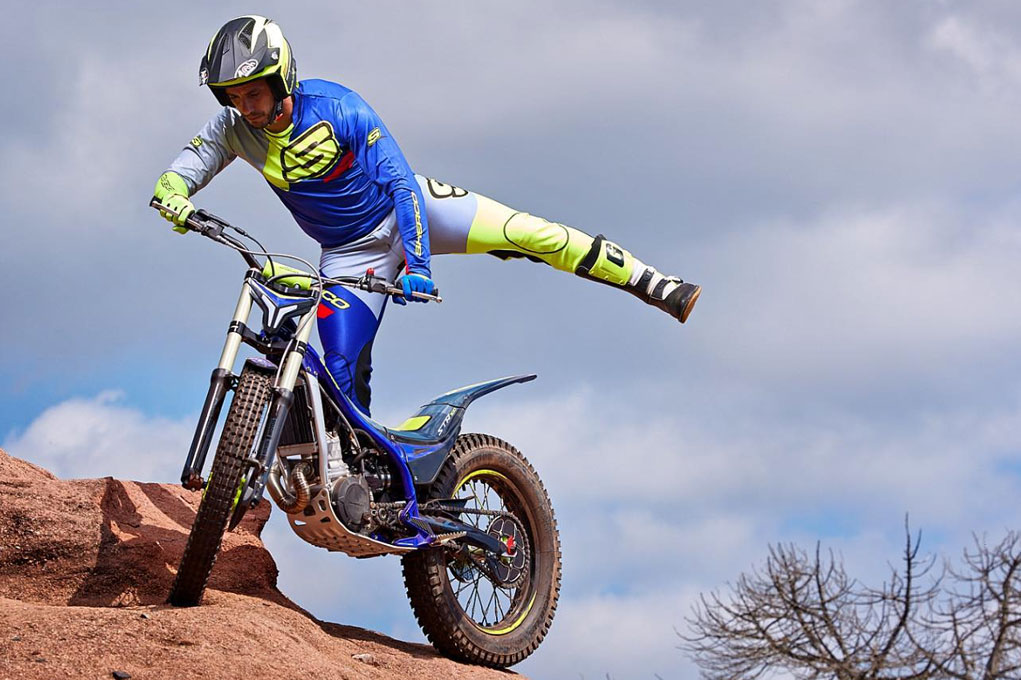
DIFFICULT START TO THE 2023 WORLD CUP
We haven’t started this World Cup as well as we would like. When you have such a new bike, with such a radical change, it’s hard to adapt to these new demands. I know that an amateur rider may find it difficult to understand, but we have other needs and we have to adapt the bike to the demands of high competition.
The break of this injury that has prevented me from being in the Japanese TrialGP has been very inopportune, since we had a very good few weeks ahead of us to prepare for the most intensive part of the world championship. It’s true that we do a lot of hours of training, but in the end where you really measure your level and that of the bike is in the races. That’s where you know how you’ve evolved.
IS THE NEW SHERCO SCR COMPETITIVE?
To what extent have you contributed to the development of the new 2023 Sherco SCR?
Two evolution teams were made. Some concentrated on last year’s base, which we were evolving with the technical team, as well as another team from the factory focused more on launching a very competitive bike for the amateur rider, very reliable, easy to ride and with the values expected for the end customer.
How important is the bike in the rider’s result?
That is a fundamental point. In the end, the whole is what adds up, and it should be as much as possible. We have to take into account three factors: team, bike and rider. In the end, what we are looking for is to add as much as possible between these three variables, and the results are the value of this sum.
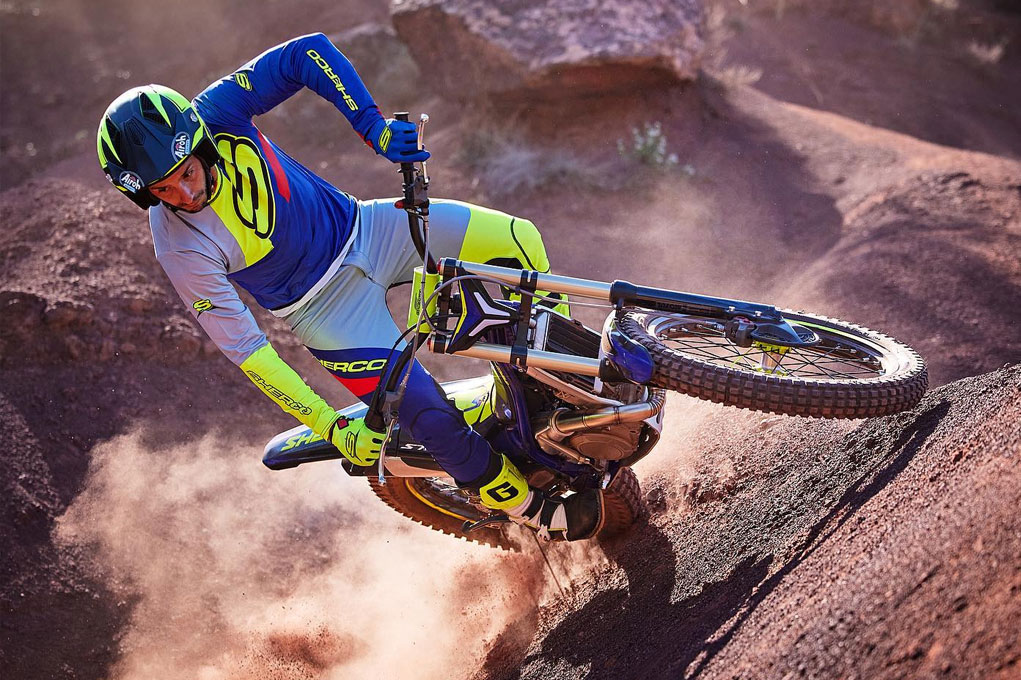
ON EQUALITY BETWEEN TRIAL BRANDS
Is there really equality between the official bikes of each brand?
There is no equality. They are different bikes and we could only know if there was a one-make cup. The reference is Toni Bou with the official Montesa team, which are really different worlds. Honda is Honda, and the other brands are the ones that live from trial, without taking away the merit of the rider.
I’m sure that a rider like Adam Raga, in equal team conditions, would have beaten Toni Bou in a world championship.
We already have generational replacement riders in the top 3. Do you feel strong enough to continue in that fight?
It’s getting harder and harder, as age gets older and young people raise the bar. In the past, on a bad day you could be fourth or fifth, now that same day is a ninth position. I see myself capable of being in the top three, and although the level has risen in general, I see the difference with Toni and Jaime, regardless of the position, since a fifth or an eighth have the same value if I am, for example, at double points.
I think I can be back in the fight, I’m sure with a little more work from me and the team.
THE SITUATION OF THE TRIAL WORLD CHAMPIONSHIP
Talking about the regulations of the World Cup, what do you think of the non-stop and the fact that at the moment there are no technical tools to accurately measure the standard?
I don’t see any future for Non Stop without the device. This subjectivity of control is evident and does not necessarily attend to the name of the pilot. If, for example, 20 pilots pass by in an area and they all make a fiasco, but the last three stop a little and take it out, that control is respected by putting a fiasco on them. This is unacceptable at the level of a trial world championship, as there must be equality for all.
I think it’s simpler to have the same old thing, with a time in the area, a photocell at the entrance and exit, and counting the feet. It is a question of passing the proposed obstacles in the time indicated.
In fact, with the non-stop the trial is less dynamic, since, between step and step, we go much slower and calmer, and if you watch the Spanish Championship on the other hand, the pace of the zone is much higher. This doesn’t have to be enduro within the zone, it’s looking for a logical balance.
What do you think of the rule of creating a parc ferme in the trial world championship?
It doesn’t change much for us, to be honest. It’s less work and makes the weekend easier. The strange thing is that the paddock of the world championship has been losing life. In my first years of the World Championship there was a caravan from race to race, because you could train from Wednesday and you had several days of constant activity. Now, you hand over the bike at three o’clock in the afternoon and the whole show is over, when you should be making the most of it for the fans to enjoy the spectacle of attending a World Championship event.
And about the controversial rule of proposing to remove the backpacker from the area?
This rule collapsed under its own weight. It’s a shame that it took a fall like Toby’s for him to go back on the norm. It is true that the area itself was not complicated, but it was dangerous due to the type of pebble that was found along the entire route. The backpacker is the only safety that the trial has. It is a sport that is designed for the rider to fail, so the only support we have in the area is that of this figure. Also, if you fall, it’s usually uphill, so the bike doesn’t leave you as there is no inertia in different directions as in other motorcycling disciplines. In trials, on the other hand, the bike tends to fall on top of you.
As for the level of the zones in your professional stage, has it changed at all?
I see it more in general. In 2013 there was a change with the nonstop, where there is more straightness in the first years in terms of the type of marked area, but that discipline has been lost and right now the nonstop is no longer nonstop, it is a “allowed stop”.

HOW IS THE RELATIONSHIP BETWEEN THE PILOTS?
Overall we have a good relationship and we get along well. I would really like the opponent to be a sport where the opponent is yourself, but small spikes end up coming into play with claims from opponents, race time management and other aspects. If we were more aggressive in the race in certain aspects, the atmosphere and the coexistence would be almost unbearable.
We have talked about these topics and many others with Jeroni Fajardo in an interview that you can consume in full video through the Trialworld YouTube channel.
We are working to generate this content with much greater recurrence, both with figures and protagonists of our sport, and through advice and exclusive content.
About Jeroni Fajardo
- Debut in the Trial World Championship: Spain 2001
- First podium: France 2005
- Official Pilot Brands: Beta, GASGAS, Vertigo, Sherco, Ossa
- Current Bike: 2023 Sherco STR 300
- Born: April 5, 1985
